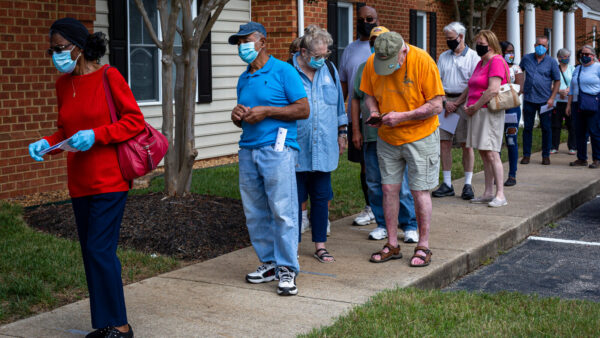Going into fall and early winter, senior health is generally always a priority. With COVID-19’s presence this year, one could argue that this is even more important. For many seniors, this means taking as many steps to avoid possible infection as possible. This generally includes:
- Minimizing going into public spaces.
- Wearing protective gear (masks, gloves) whenever around other people.
- Opting to do virtual communication over in-person visits with friends and family.
However, in some cases, these methods are incompatible with certain actions. Conventional voting, with many people in close proximity as well as shared surfaces in writing utensils and voting machines, are a key example. Of course, everyone deserves to have their vote counted, especially in an important election like this one. As a result, here’s a look at options that allow seniors to vote without putting them at added risk.
Mail-In Ballots
Despite the fact that these have always been available, mail-in ballots have become far more popular this year with people looking to avoid possible exposure at polling places. This essentially allows seniors to have their ballot sent to them via mail, fill it out, send it back, and have their vote counted without having to leave their homes.
With this said, there are a few provisions seniors want to keep in mind, one of which includes filling the ballot out correctly. Be sure to read the instructions in detail to make sure your vote isn’t accidentally counted for the wrong candidate. In addition, you need to properly put the ballot in the security envelope before putting it in the outer envelope and signing it. Failing to return the ballot in both envelopes without a proper signature will result in your ballot not being counted. Take advantage of the fact that you are home and take your time to be sure you get it right.
When it comes to sending in your mail-in ballot, you have two options. Of course, you can always just put it in the mail, but if you opt for this method, it’s essential that you fill out and mail in your ballot as soon as possible. Waiting until the last minute and putting your ballot in the mail may result in it getting to election officials too late to be counted. Another option that avoids this altogether is bringing your ballot to a county dropbox. These are open 24-hours a day, but you’ll need to look online to see where boxes are available in your county.
Voting At Your Local County Office
This option isn’t available in every state, but for those who don’t want to handle a mail-in ballot, this does offer a somewhat safer alternative to conventional voting. In essence, this entails you going to your county election office, filling out a ballot in person, and submitting it during your visit. The rules may be different from state to state and even county to county, so make sure that you read ahead. For example, the office may only be open at certain times for voting. In addition, you want to make sure that you still have protective gear when you go in to vote. There may be fewer people here, but there is a risk of infection whenever going into space with people you don’t know.
Early Voting
For those who want to vote in person, early voting offers a safer option for many seniors. By voting early, either at a polling place or at a county office, you have smaller crowds, shorter lines, and generally a simpler process to go through. The one caveat here is that the rules and dates for early voting are different for every state. You will need to look up ahead of time what applies to you and your vote.
Going To A Polling Place
Lastly, in some cases, you may have no option but to go to a polling place on Election Day. Perhaps you missed the deadline for getting a mail-in ballot, or another issue has arisen. In the event that you have to go to a polling place, there are still some steps you can take to be safer.
- Have your protective gear. Be sure to have your mask and gloves, and dispose of your gloves as soon as you are done voting.
- Bring your own pen. This will minimize your contact with shared surfaces.
- Choose your time wisely. Seniors have a bit of an advantage in terms of when they can go to the polls, so try to go around midday or whenever you think there will be as few people as possible.
- Get in and out as fast as possible. Chatting with poll workers may be a part of your traditional routine, but the sooner you are done voting, the lower your exposure risk.
Everyone deserves to have their voices heard in every election. The unique challenges that 2020 poses may seem tough to overcome for some seniors, but it’s more than possible with a little bit of planning.

